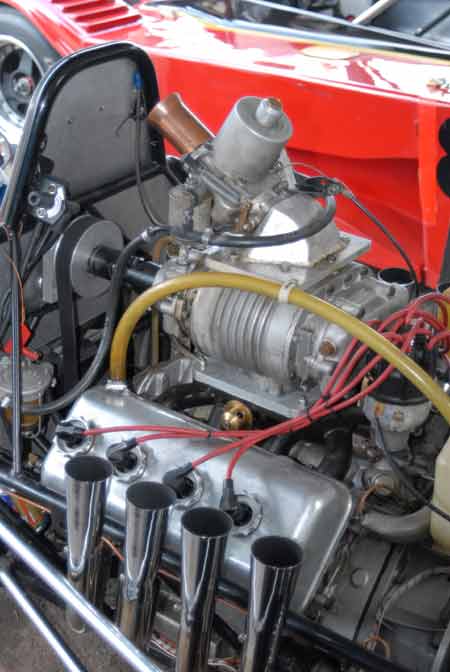The Roots supercharger
At a time when turbochargers are increasingly being touted along with engine downsizing for future road vehicle business, spare a thought for the old-fashioned supercharger. Driven directly or indirectly off the crankshaft, the air delivery characteristics of a positive-displacement, Roots-type supercharger are generally much more aligned with those of the reciprocating internal combustion engine.
Consisting of two internal rotors in the shape of lobes rotating together, and phased using gears to prevent contact, when geared to the crankshaft the air delivery per revolution is fixed, so as the engine speed increases so does the air delivery of the pump. Unlike the turbocharger, no fancy pop-off valves or bypass systems to avoid excessive boost pressures have to be incorporated. And since air delivery is broadly linear with the engine speed, the manifold or boost pressure will remain more or less unchanged.
Not fully appreciated by many, supercharged engines simply add to the driving experience. Opening the throttle produces instant power and the feeling of driving a much larger engine than the one under the bonnet, and because of this (and unlike turbocharged machines) driveability - that characteristic that often gets lost in the search for power - is vastly improved; ask anyone who has conducted back-to-back tests with a turbocharged vehicle. With a supercharged engine you quickly forget (if you ever knew) the presence of the supercharger, unlike a turbocharged unit where the delay in response, however slight, is always there, even with the best of systems.
Strictly speaking, a Roots-type supercharger is a pump rather than an air compressor, and while more modern mechanical units may include a small amount of internal compression, generally speaking these machines have no internal compression inside them; the increased intake plenum or boost pressure is created solely by the restriction to flow in the engine.
When running at a part-load, off-throttle condition - which let's face it, even competition vehicles do for quite a lot of the time - there is therefore little parasitic drag, unlike say that of a turbine of a turbocharger in the exhaust stream, which will always impose some level of back-pressure against the engine. On some newer units these twin lobes have been replaced by a three-lobe design, which when twisted to form a helix along the length of the rotor introduce an element of compression to the intake charge. More important for road-based applications, this reduces the intake port pulsation and therefore intake noise.

Since Roots-type machines have no contacting parts, friction within the device is low, and the design of the intermeshing rotors is such that no out-of-balance forces are generated. Roots blowers are therefore safe up to quite high speeds, with 4000 rpm being quoted by some manufacturers. At these speeds, however, designers need to take heed of the increased inertia of the rotor and design the drive system to cope.
One particular issue with Roots superchargers is the clearance between the rotors. Machined and coated to minimise this at all times but never to make contact, at low speeds pumping efficiency can be impaired and lead to a certain amount of leakage. In modern designs this has been all but eliminated, and reliability has been vastly improved such that when specified on OE vehicles, units can be expected to last the vehicle's life.
So while modern trends seem to be leaning towards complex turbocharger systems, for raw performance and simplicity of installation - as well the sheer driving delight - you simply can't beat a good blower.
Fig. 1 - A Roots-type supercharger
Written by John Coxon